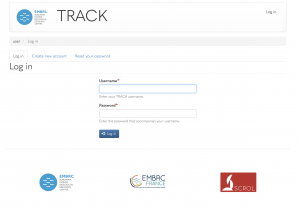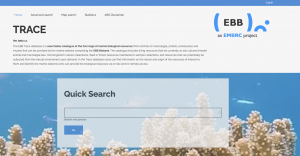The document explains the requirements that a collection needs to comply with to be included in the EU register of collections, and the difficulties that the EBB project found in its initial idea to include all the partners collections as a single collection named European Blue Biobank. Because the registration of the collections must be done at national level, the deliverable also describes the steps to be taken by each partner of the EBB project to register their collections individually, should they wish to do so.
Learning outcomes from the case studies supported by EBB project
Utilization of marine genetic resources from jurisdictional waters requires providing proof that sampling and utilization of such resources has been done in accordance with National ABS regulations in place. EEB project has implemented a series of use cases (Report on the use cases) to learn the possible constraints and problems that may arise during the process of obtaining the necessary documentation and present easy to follow solutions. The lessons learned were applied to improve the EBB best practice guidelines on ABS (The EMBRC guide to ABS compliance. Recommendations to marine biological resources collections’ and users’ institutions) produced for institutions providing access to marine genetic resources both ex-situ and in-situ and to produce the Step by Step guide towards ABS compliance for users (Seek, keep & transfer: A step-by-step guide to ABS compliance when utilizing marine genetic resources).
Report on the use cases
EBB project engaged with end-users of marine biological resources to learn about the practical implications of complying with Access and Benefit Sharing (ABS) regulations in the countries of origin and the major hurdles they need to face during the process. Sixteen case studies for non-commercial utilisation of genetic resources are presented in this document, selected amongst the more than 30 that EBB followed and supported. These cases illustrate a number of difficulties and grey areas regarding the applicability or not of the Nagoya Protocol within different research contexts and applications. In doing so EBB has proposed and encountered ways to solve such problems. The lessons learnt were applied to improve the EBB best practice guidelines on ABS produced for the provision of ex-situ and in-situ genetic resources within Atlantic area EMBRC collections and biobanks (The EMBRC guide to ABS compliance. Recommendations to marine biological resources collections’ and users’ institutions) and to produce its associated Step by Step guide towards ABS compliance (Seek, keep & transfer: A step-by-step guide to ABS compliance when utilizing marine genetic resources).
EBB creates a centralized integrated biobank database and improves operational standards
The (bio)diversity of culture collections and biobanks regarding different types of organisms is of great value, specially in the pursuit of new biological products for the development of the blue bioeconomy, which makes these biobanks (most of them part of EMBRC), a very sought-after asset in applied research.
However, the organizational complexity of these culture collections and biobanks makes very difficult to navigate through them, as one may have to search through different libraries or databases, since each biobank has its own database. This is not only troublesome for anyone who wishes to find the right organism for its research, but it also brings problems from the point of view of traceability of Marine Biological Resources (MBR), a key aspect of Access and Benefit Sharing (ABS) regulations.
EBB´s consortium involves marine culture collections and biobanks belonging to ten European institutions and, led by Dr. Ian Probert, manager of Roscoff Culture Collection at Station Biologique de Roscoff (Sorbonne Université), EBB has developed two management tools: TRACK and TRACE.
TRACK has born out of the need of homogenizing the database organization of all the culture collections and the biobanks that are part of EBB. It is an e-tool designed to manage and provide access to data pertaining to sampling and maintenance of marine biological resources (collected in the wild, in sample collections or cultured) from biobanks.

TRACE is an online database that will serve as a common access system to marine biological resources collections. This searchable catalogue groups the full range of marine biological resources that can be provided by the marine stations of EBB, constituting the European Blue Biobank.

Both tools will be part of the legacy that our project will leave to the EMBRC community and to the marine research and science.
ABS compliance for collections and fundamental research using MBRs
Providing access to marine genetic resources is one of EMBRC’s primary services. The EMBRC is committed to facilitating access to and supply of marine biological and genetic material to users in compliance with international, European and national legal frameworks regarding Access and Benefit Sharing (ABS). In order to support implementation of ABS regulations in EBB’s biobanks and culture collections, EBB project carried out two internal audits of the ABS status of the resources held in collection. In the Deliverable 5.3: “Updated EBB Inventory of Marine Biological Resources” are described the main results obtained after the two audits.
For read the deliverable, please click below.
The practical guide for users “Seek, keep & transfer: A step-by-step guide to ABS compliance when utilizing marine genetic resources”
EBB project main goal is to facilitate sustainable access to marine biodiversity, its associated data, and extractable products for local and international academia and industry users, and to incentivize biodiversity conservation in coastal ecosystems by promoting compliance with Access and Benefit Sharing (ABS) regulations derived from the Nagoya Protocol. There are concerns that the added bureaucracy in relation to ABS regulations may be detrimental to Research, Development and innovation activities. In order to promote R&D+I on marine bioresources, the EBB has produced the step-by-step guide “Seek, keep & transfer: A step-by-step guide to ABS compliance when utilizing marine genetic resources”. This guide is a practical to-do-list for individual scientists from academia or private sector conducting research on “marine genetic resources”. This document recommends users to follow a 6-step iterative process by answering some questions in an iterative way. The guide presents action and provides tips for each of the 6 steps.
The guide was developed as the Deliverable 3.4 “Best Practice Guidelines (BPGs) on Accessing MBRs for commercial research in compliance with ABS Regulations”. This guide is delivered by the EBB project with support of the European Marine Biological Resource Centre (EMBRC-ERIC) ABS Working-Group.
The EMBRC guide to ABS compliance. Recommendations to marine biological resources collections’ and users’ institutions
Providing access to marine genetic resources is one of EMBRC’s primary services. The EMBRC is committed to facilitating access to and supply of marine biological and genetic material to users in compliance with international, European and national legal frameworks regarding Access and Benefit Sharing (ABS). The European Blue Biobank (EBB) project, under the umbrella of EMBRC, supports this aspiration by promoting compliance with ABS regulations derived from the Nagoya Protocol and implemented in Europe through the EU ABS Regulation that came into force in 2014 as well as Member State’s access legislations, where applicable. This regulatory framework, although effective in protecting the rights of the provider country, puts burden on the user to demonstrate lawful utilization. In this context, research infrastructures, facilities, biobanks and collections may play a role by facilitating legal compliance and lawful use of the genetic resources they provide.
EBB project has produced the “Deliverable 5.1. Handbook on implementation of EBB Best Practices and Sample Identification System”. This handbook of best practices was endorsed by EMBRC and has become “The EMBRC guide to ABS compliance. Recommendations to marine biological resources collections’ and users’ institutions”.
DISCLAIMER
On 14 December 2020, the European Commission adopted Guidance document C(2020)8759 on the scope of application and core obligations of Regulation (EU) No 511/2014 (EU ABS Regulation) which incorporates and complements the previously adopted guidance document of 2016.
The EBB guide to ABS compliance was delivered and endorsed by EMBRC before said Guidance document was published. Although still valid, its recommendations may not encompass up-to-date inclusive information on the EU ABS Regulation.
The guide will shortly be completed by EMBRC to take the new EU ABS Regulation Guidance document into consideration. It will include a new section on obligations for services provided on marine genetic resources (obligations of service requester and of service provider).
The EMBRC guide to ABS compliance. Recommendations to marine biological resources collections’ and users’ institutions
Deliverable 2.5.2. Documentary Script
Deliverable 2.5.2. Documentary Script. Action 5. WP2 Project Communication
This deliverable defines the actions taken within the framework of deliverable 2.5.2 (WP2: Communication) of the EBB project in order to facilitate the dissemination and understanding of its main objective: the preservation of marine biodiversity.
A television show, ‘Teknopolis’, was recorded with a high local audience, with the aim of making the general public and a large number of users aware of the importance of biodiversity and showing the main steps that must be taken to comply with ABS regulations when we work with genetic resources.
Euskal Irrati Telebista (EiTB), the Basque Autonomous Radio Television proposed Dr. Ibon Cancio from the Plentzia Maritime Station (PiE-UPV / EHU) of the University of the Basque Country (UPV / EHU) to be the master of ceremonies. He, and the host of the television program, toured the rocky intertidal zone finding different marine species, which can be used as marine genetic resources.
Communication Kit (Deliverable D2.2)
Our communication kit includes a series of materials made up of posters, brochures, documents or partners logos that are useful to show EBB mission, the main aims of project or the entities integrated in the consortium.
This set of materials proofs to be very useful for partners to communicate information to media and stakeholders in a homogeneous way. Likewise, the members of the consortium will be able to provide a clear image of the project with a unified message and brand.
